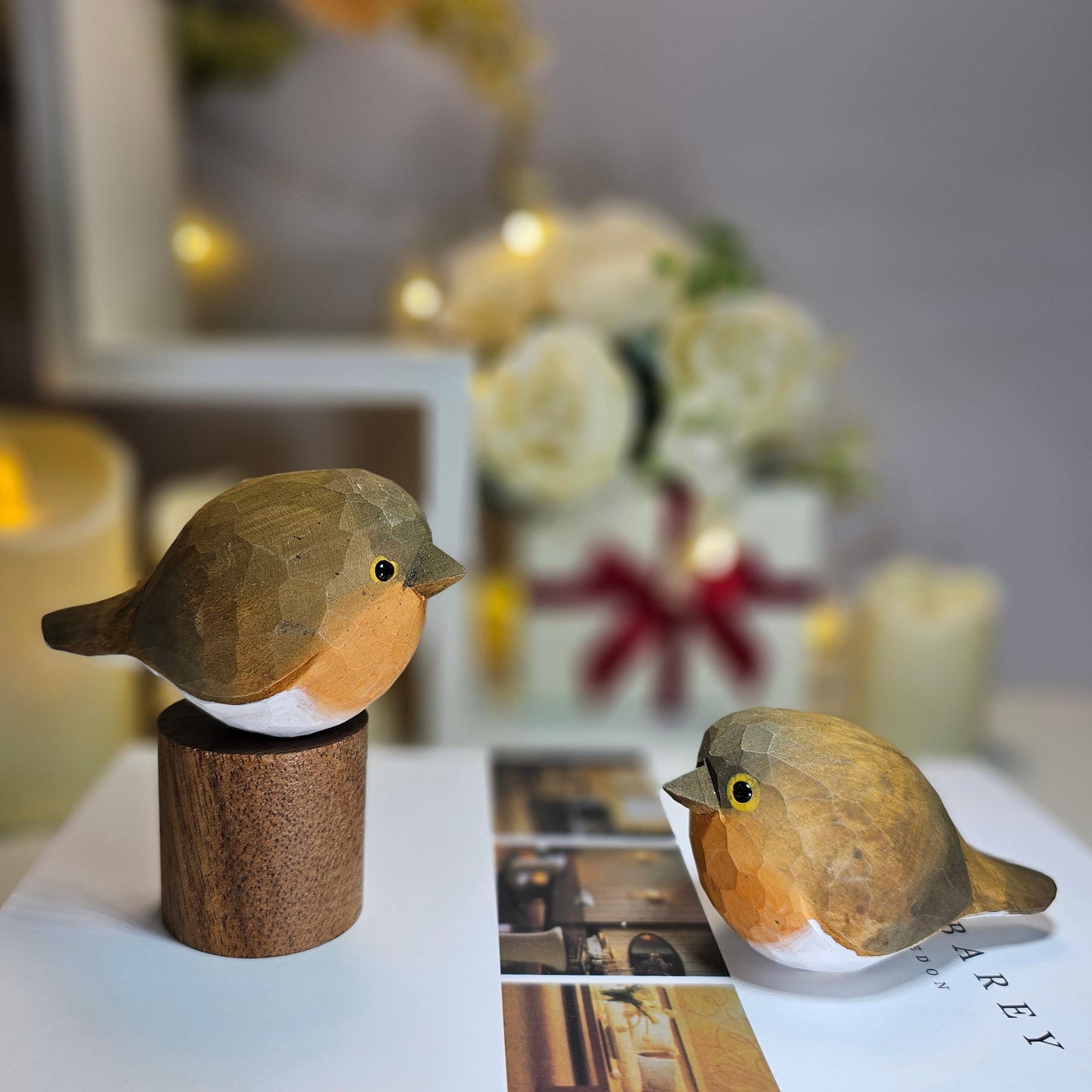
L'incantevole fascino del pettirosso europeo: un'amata icona della natura
Share
Il pettirosso, spesso noto come pettirosso europeo o scientificamente come Erithacus rubecula , è un piccolo uccello passeriforme che ha conquistato i cuori di molti con il suo aspetto affascinante e il suo canto melodioso. Diffuso in tutta Europa, in alcune parti dell'Asia occidentale e nel Nord Africa, questo uccello è una visione comune nei giardini, nei boschi e nelle zone cespugliose.
Caratteristiche fisiche
Il pettirosso europeo è facilmente riconoscibile per il suo petto e il suo muso di un vivace rosso-arancio, in contrasto con le sue parti superiori color marrone oliva e il ventre bianco. I pettirossi adulti sono lunghi circa 12,5-14,0 cm, il che li rende una presenza piccola ma evidente nel loro habitat naturale. I loro occhi rotondi e la piccola statura contribuiscono al loro aspetto accattivante.

Tratti comportamentali
I pettirossi sono noti per la loro natura territoriale, in particolare i maschi, che difendono vigorosamente i loro luoghi di riproduzione. Questi uccelli sono diurni, per lo più attivi durante il giorno, e la loro dieta consiste principalmente di insetti, vermi, semi e frutti. Uno degli aspetti più intriganti del comportamento del pettirossi è la sua impavidità nei confronti degli umani, spesso avvicinandosi mentre uno di loro coltiva un orto o cammina nel loro territorio.
Vocalizzazioni e Comunicazione
Il canto del pettirosso è una delle sue caratteristiche più distintive. Sia i maschi che le femmine cantano tutto l'anno, utilizzando varie melodie per attrarre i compagni, dichiarare il territorio o rispondere ad altri pettirossi. Il canto è un gorgheggio melodioso e fluido che può essere udito da una distanza considerevole, in particolare al mattino presto e alla sera tardi.
Abitudini di riproduzione e nidificazione
 I pettirossi sono monogami durante la stagione riproduttiva, con coppie che si formano a fine inverno. Costruiscono nidi in luoghi appartati, spesso sul terreno o in basso nelle siepi. La femmina depone e cova una covata di 4-6 uova azzurre, ed entrambi i genitori sono coinvolti nell'alimentazione dei nidiacei.
I pettirossi sono monogami durante la stagione riproduttiva, con coppie che si formano a fine inverno. Costruiscono nidi in luoghi appartati, spesso sul terreno o in basso nelle siepi. La femmina depone e cova una covata di 4-6 uova azzurre, ed entrambi i genitori sono coinvolti nell'alimentazione dei nidiacei.
Significato culturale
Il pettirosso occupa un posto speciale in molte culture, in particolare in Gran Bretagna, dove è considerato un simbolo del Natale. Questa associazione è in parte dovuta alla sua presenza nei giardini durante l'inverno e al suo prominente petto rosso, che ricorda la stagione delle feste.
Stato di conservazione

Fortunatamente, il pettirosso europeo è classificato come Least Concern dalla IUCN, grazie alla sua ampia distribuzione e alla popolazione stabile. Tuttavia, come tutti gli animali selvatici, i pettirossi affrontano sfide dovute alla perdita di habitat e ai cambiamenti ambientali.
Il pettirosso rimane un amato simbolo del mondo naturale, incantando le persone con la sua bellezza e i suoi canti. La sua presenza è un promemoria delle intricate connessioni all'interno degli ecosistemi e della gioia che la fauna selvatica può portare nelle nostre vite.









